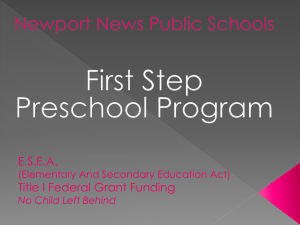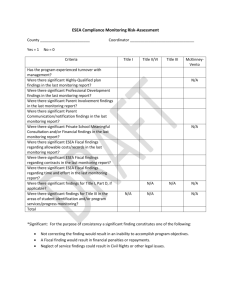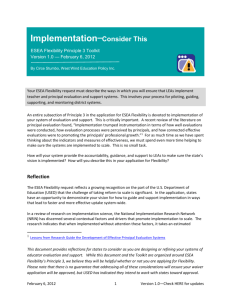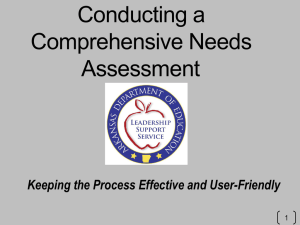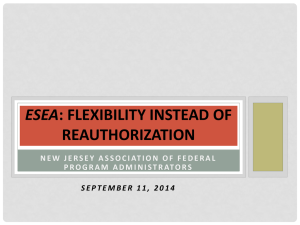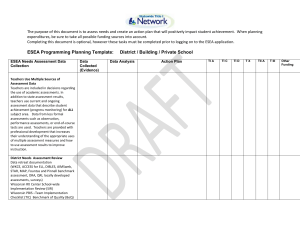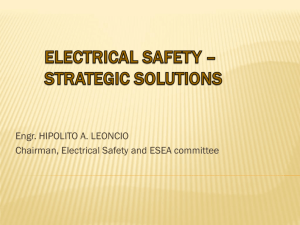STAKEHOLDERS Consider This
advertisement
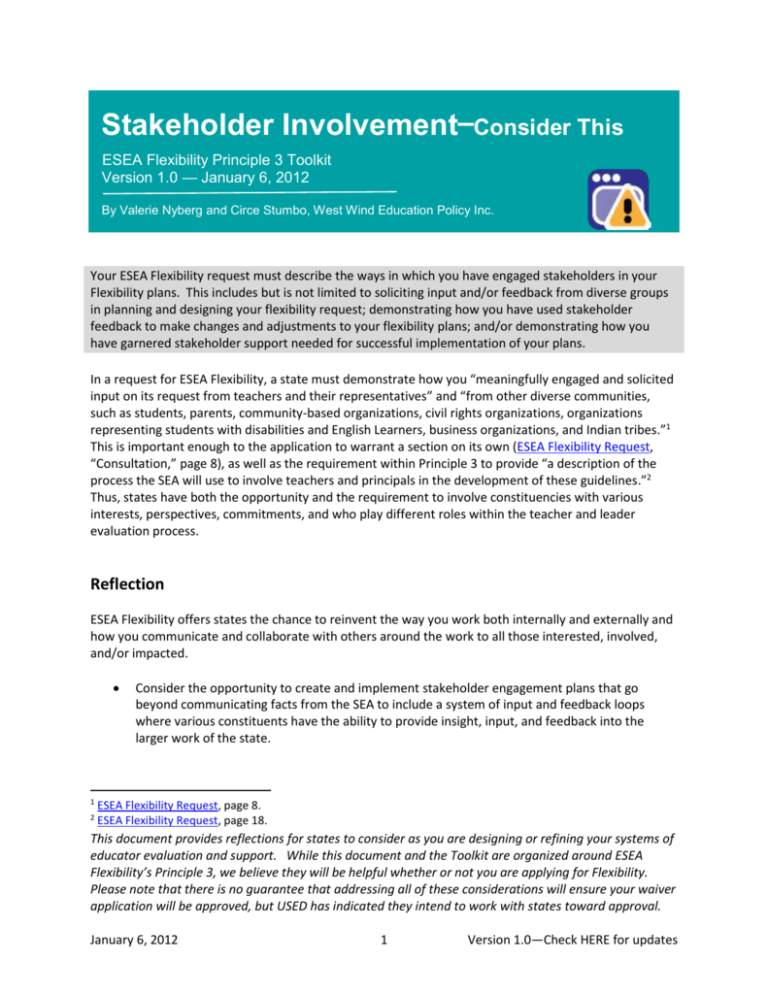
Stakeholder Involvement—Consider This ESEA Flexibility Principle 3 Toolkit Version 1.0 — January 6, 2012 By Valerie Nyberg and Circe Stumbo, West Wind Education Policy Inc. Your ESEA Flexibility request must describe the ways in which you have engaged stakeholders in your Flexibility plans. This includes but is not limited to soliciting input and/or feedback from diverse groups in planning and designing your flexibility request; demonstrating how you have used stakeholder feedback to make changes and adjustments to your flexibility plans; and/or demonstrating how you have garnered stakeholder support needed for successful implementation of your plans. In a request for ESEA Flexibility, a state must demonstrate how you “meaningfully engaged and solicited input on its request from teachers and their representatives” and “from other diverse communities, such as students, parents, community-based organizations, civil rights organizations, organizations representing students with disabilities and English Learners, business organizations, and Indian tribes.”1 This is important enough to the application to warrant a section on its own (ESEA Flexibility Request, “Consultation,” page 8), as well as the requirement within Principle 3 to provide “a description of the process the SEA will use to involve teachers and principals in the development of these guidelines.”2 Thus, states have both the opportunity and the requirement to involve constituencies with various interests, perspectives, commitments, and who play different roles within the teacher and leader evaluation process. Reflection ESEA Flexibility offers states the chance to reinvent the way you work both internally and externally and how you communicate and collaborate with others around the work to all those interested, involved, and/or impacted. 1 2 Consider the opportunity to create and implement stakeholder engagement plans that go beyond communicating facts from the SEA to include a system of input and feedback loops where various constituents have the ability to provide insight, input, and feedback into the larger work of the state. ESEA Flexibility Request, page 8. ESEA Flexibility Request, page 18. This document provides reflections for states to consider as you are designing or refining your systems of educator evaluation and support. While this document and the Toolkit are organized around ESEA Flexibility’s Principle 3, we believe they will be helpful whether or not you are applying for Flexibility. Please note that there is no guarantee that addressing all of these considerations will ensure your waiver application will be approved, but USED has indicated they intend to work with states toward approval. January 6, 2012 1 Version 1.0—Check HERE for updates The USED invitation for stakeholder engagement is broad: in order to “ensure adoption,” USED believes stakeholders must be brought in to “review, revise, and improve”3 the state system of evaluation and support. Thus, rather than focusing mainly on establishing task forces or work groups, holding community forums, and/or conducting internal and external surveys designed for participants to simply to comment on ESEA Flexibility plans, states may want to design a process wherein multiple stakeholder groups work collaboratively to actually design, plan, pilot, and implement evaluation and support systems. Ensuring diverse representation may require states to engage groups that may not typically participate in such processes. This must be balanced the need to engage those who have always participated, making sure that both have equal opportunities and avenues to participate. Note that in section 3.B, USED asks for “the SEA’s process for ensuring that each LEA develops, adopts, pilots, and implements, with the involvement of teachers and principals, … high-quality teacher and principal evaluation and support systems….”4 As with every topic, reviewers will be looking for coherence and comprehensiveness in your stakeholder engagement plans both within Principle 3 and across your entire application for Flexibility. How are you ensuring that teachers, administrators and others affiliated with LEAs have a stake in your teacher and leader evaluation system? Questions to Consider As you develop your vision and plan for articulating the ways and means the state is engaging various stakeholders, in addition to the questions that are outlined in the ESEA Flexibility request about your system of evaluation (see ESEA Flexibility Review Guidance), you may wish to consider these questions: 1. How has the engagement of teachers and school leaders and their representatives’ helped to develop their commitment to supporting implementation of the teacher and leader evaluation systems? What evidence can you show for this? 2. What is the vision for how you will involve stakeholders throughout all of the elements and iterations of your system design and implementation? 3. How is the state as well as the SEA creating feedback loops throughout the process of developing, adopting, piloting and implementing teacher and leader evaluation systems in order to using stakeholder feedback to improve the system? Once you have stakeholder input and feedback, how does that inform or modify your plans? 3 4 ESEA Flexibility Request, page 19. ESEA Flexibility Request, page 19. January 6, 2012 2 Version 1.0—Check HERE for updates Additional Information See Stakeholder Engagement—State Examples for ideas about how states are describing and communicating how they are engaging their stakeholders. January 6, 2012 3 Version 1.0—Check HERE for updates
